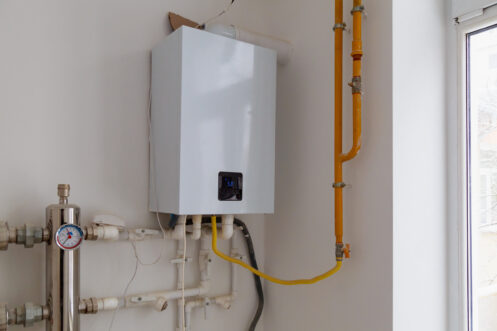Steps to Prolong the Life of Your Home's Hot Water System Through Maintenance
Steps to Prolong the Life of Your Home's Hot Water System Through Maintenance
Blog Article
Do you find yourself looking for information on What Kind of Maintenance Do Water Heaters Need??

Warm water is important for day-to-day comfort, whether it's for a rejuvenating shower or washing recipes. To ensure your warm water system runs efficiently and lasts longer, routine upkeep is vital. This short article gives useful pointers and understandings on just how to preserve your home's warm water system to avoid interruptions and pricey repair work.
Intro
Preserving your home's warm water system might seem overwhelming, but with a few straightforward steps, you can ensure it runs smoothly for many years to come. This overview covers everything from comprehending your warm water system to DIY upkeep pointers and knowing when to contact specialist aid.
Significance of Keeping Your Warm Water System
Regular maintenance not only prolongs the life expectancy of your warm water system yet also ensures it runs efficiently. Ignoring upkeep can result in reduced effectiveness, greater power bills, and even premature failure of the system.
Signs Your Warm Water System Requirements Upkeep
Recognizing when your warm water system requires focus can protect against significant issues. Look out for signs such as inconsistent water temperature, unusual noises from the heater, or rusty water.
Purging the Hot Water Heater
Flushing your water heater eliminates sediment build-up, boosting effectiveness and extending its life.
Monitoring and Changing Anode Rods
Anode poles protect against deterioration inside the container. Checking and changing them when broken is important.
Facility Concerns Requiring Expert Help
Examples consist of significant leakages, electric issues, or if your water heater is consistently underperforming.
Routine Specialist Upkeep Advantages
Professional maintenance can consist of complete assessments, tune-ups, and making sure conformity with safety and security standards.
Inspecting and Readjusting Temperature Level Settings
Readjusting the temperature level setups makes sure ideal performance and safety and security.
DIY Tips for Maintenance
You can execute a number of maintenance tasks on your own to keep your warm water system in top condition.
Looking for Leaks
Routinely examine pipelines and connections for leaks, as these can cause water damage and greater bills.
Comprehending Your Hot Water System
Prior to diving into upkeep tasks, it's practical to comprehend the standard parts of your hot water system. Usually, this includes the water heater itself, pipelines, anode rods, and temperature level controls.
Monthly Upkeep Tasks
Routine month-to-month checks can assist capture minor concerns before they intensify.
Testing Pressure Alleviation Valves
Examining the stress safety valve ensures it functions correctly and stops too much pressure accumulation.
Insulating Pipes
Shielding hot water pipes minimizes heat loss and can save power.
When to Call a Professional
While DIY upkeep is beneficial, some problems require expert expertise.
Final thought
Routine upkeep of your home's hot water system is vital for performance, longevity, and expense financial savings. By following these suggestions and understanding when to look for professional help, you can make certain a dependable supply of warm water without unanticipated disturbances.
How to Maintain an Instant Hot Water Heater
Before tinkering with your hot water heater, make sure that it’s not powered on. You also have to turn off the main circuit breaker and shut off the main gas line to prevent accidents. Also turn off the water valves connected to your unit to prevent water from flowing into and out of the appliance. 2. When you’re done, you have to detach the purge valves’ caps. These look like the letter “T†and are situated on either side of the water valves. Doing so will release any pressure that has accumulated inside the valves while at the same time avoid hot water from shooting out and burning your skin. 3. When the purge valves’ caps are removed, you have to connect your hosing lines to the valves. Your unit should have come with three hoses but if it didn’t, you can purchase these things from any hardware or home repair shops. You can also get them from retail stores that sell water heating systems. Read the user’s manual and follow it to complete this task properly. When the hosing lines are connected, open the purge port’s valves. 4. You should never use harsh chemical cleaners or solutions when cleaning your unit. Make use of white vinegar instead. It should be undiluted and you’ll probably use about 2 gallons. 5. Now flush your water heater. This task should probably take about 40 minutes. We can’t give you specific directions for this because the procedure is carried out depending on the type, model and brand of your heater. With that being said, refer to the user’s manual. 6. When you’re done draining the unit, you have to turn off the purge port valves again. Remove the hosing lines that you earlier installed on each of the water valves. Put the valve caps (purge port) back in their respective places and be very careful so as not to damage the rubber discs that are found inside these caps. 7. Now that everything’s back in place, check your user’s manual again to find out how to reactivate your water heating system. 8. Once it is working, turn one of your hot water faucets on just to let air pass through the heater’s water supply pipes. Leave the tap on until water flows smoothly out of it. https://www.orrplumbing.com/blog/2014/september/how-to-maintain-an-instant-hot-water-heater/

As a reader on Tips on Maintaining a Water Heater, I was thinking sharing that piece of writing was appropriate. Liked our blog? Please share it. Help somebody else find it. Thanks for being here. Don't hesitate to visit our site back soon.
Call Today Report this page